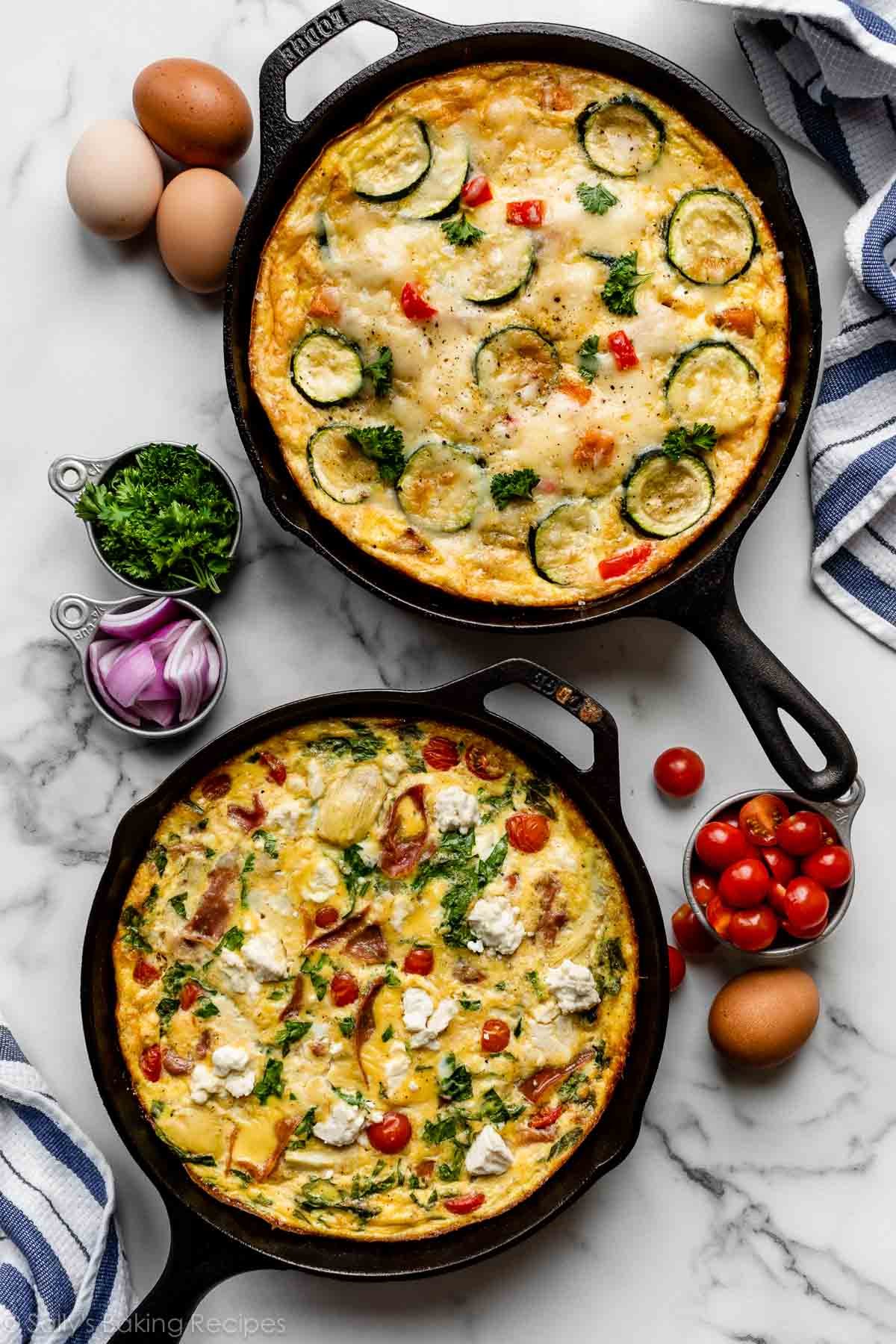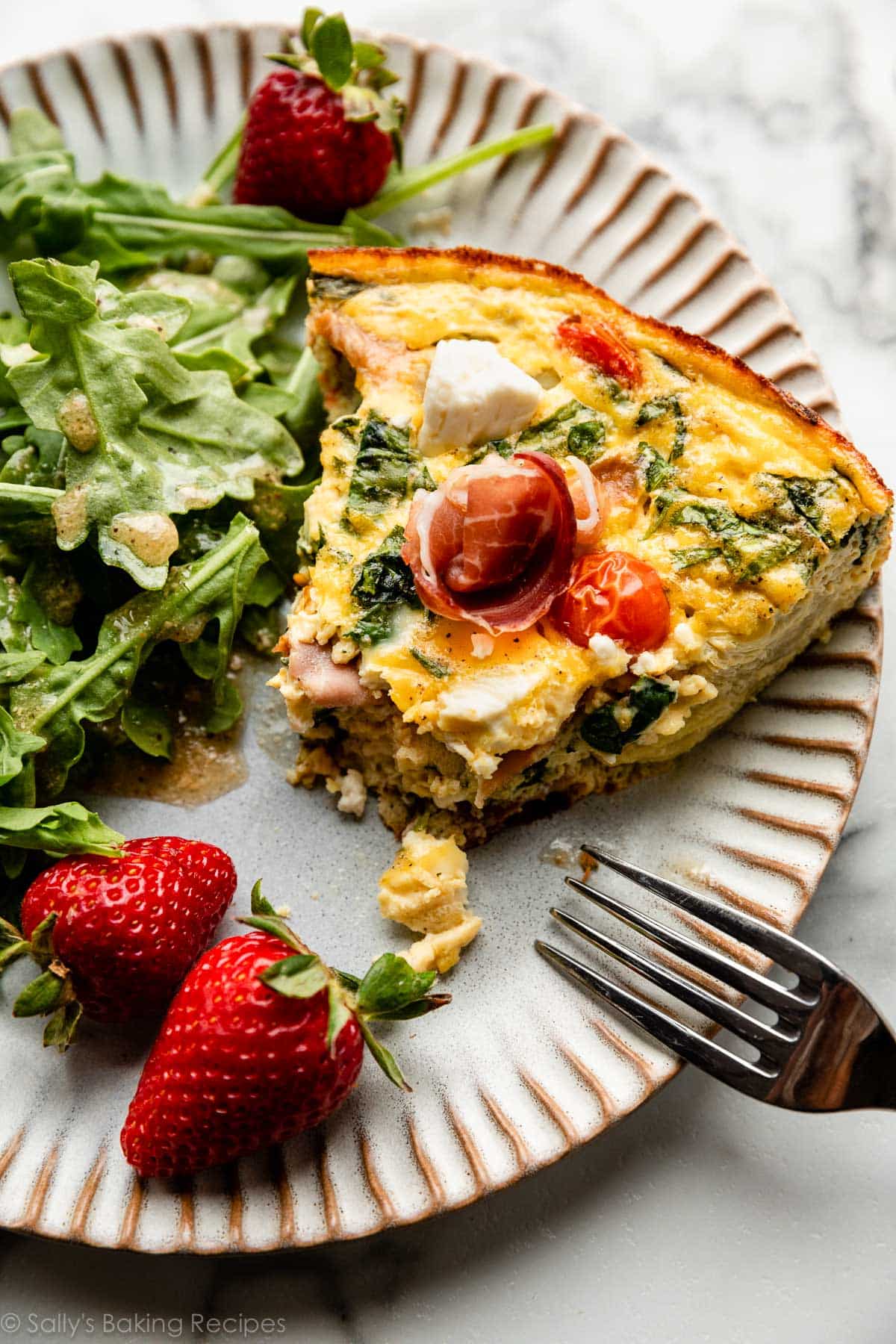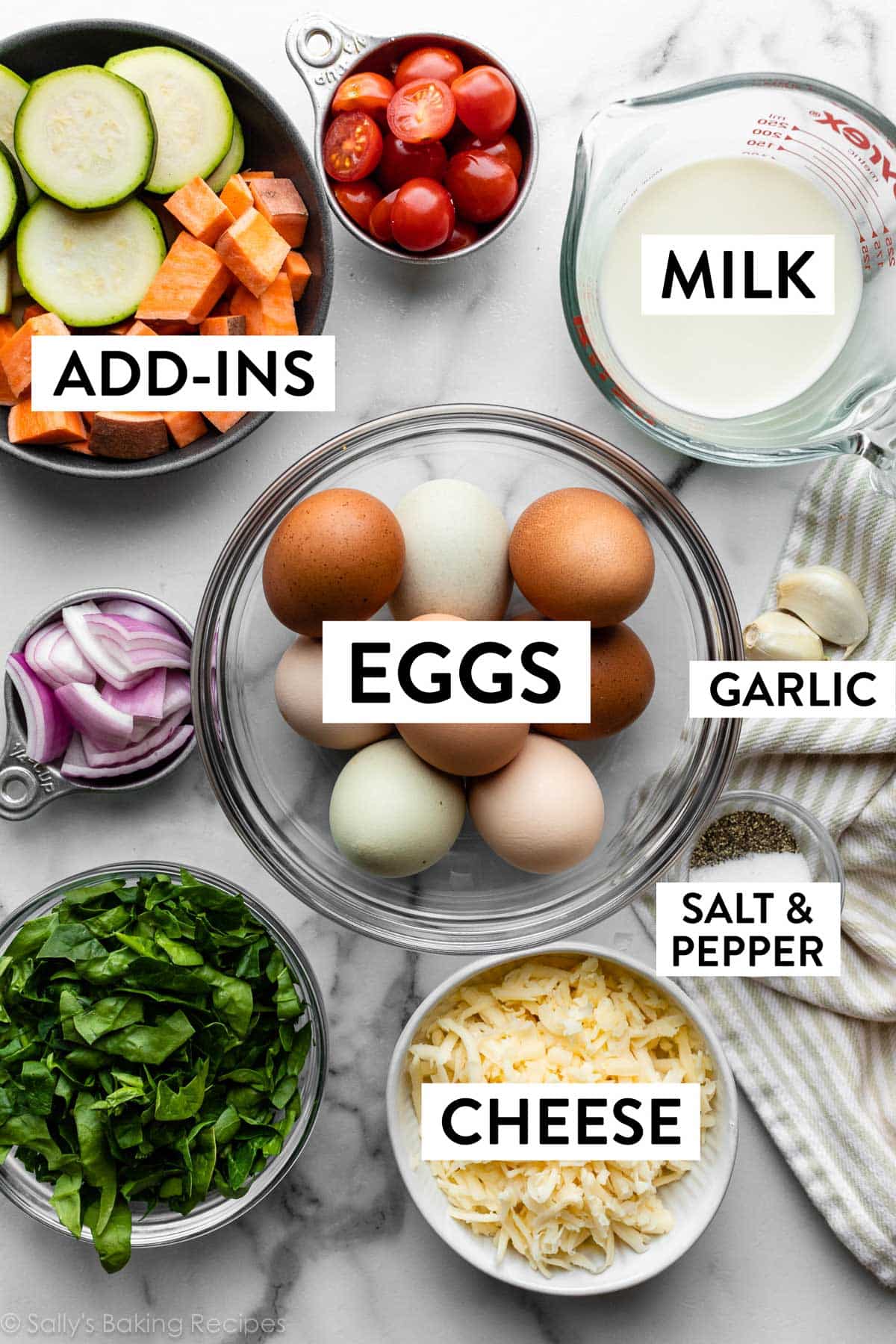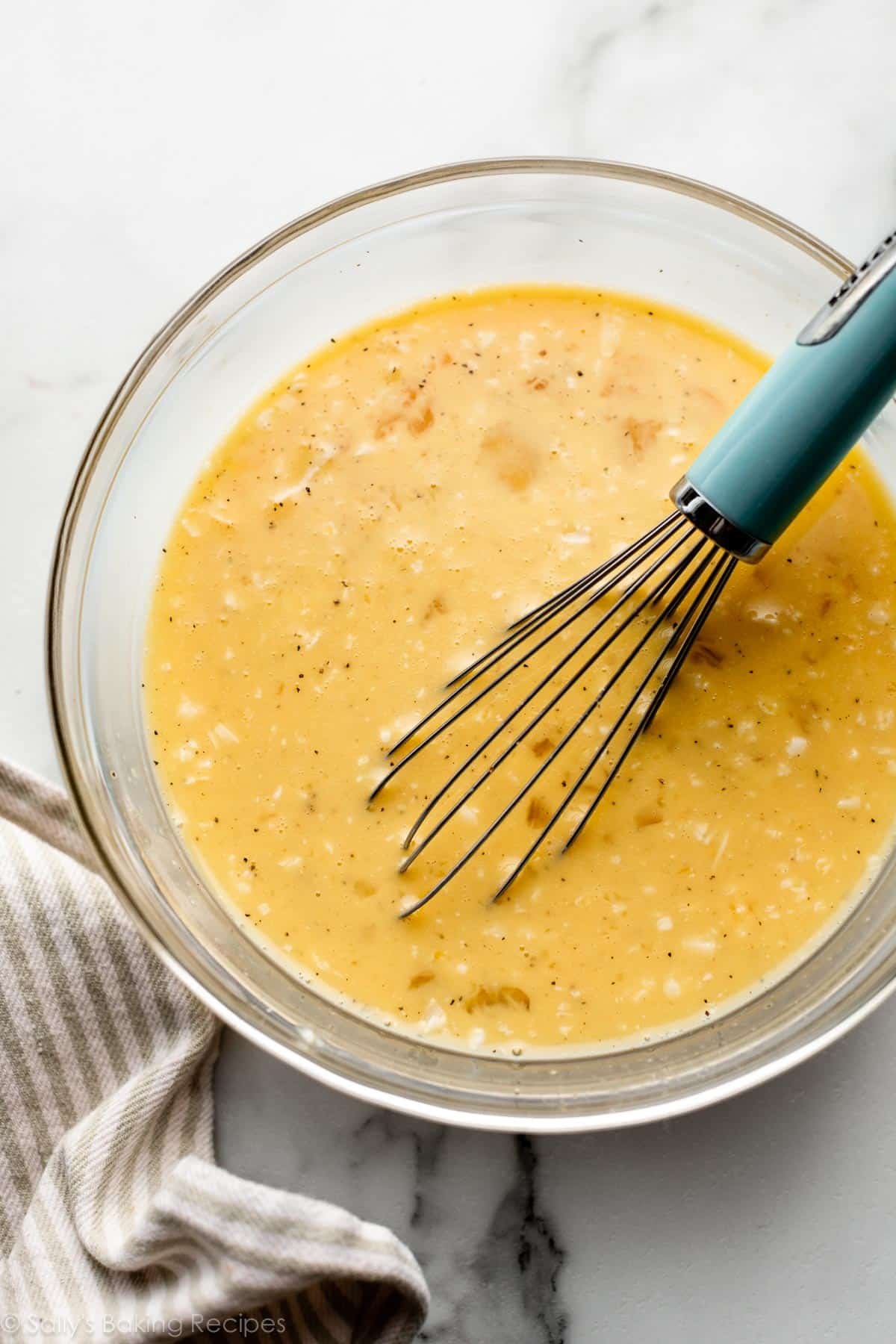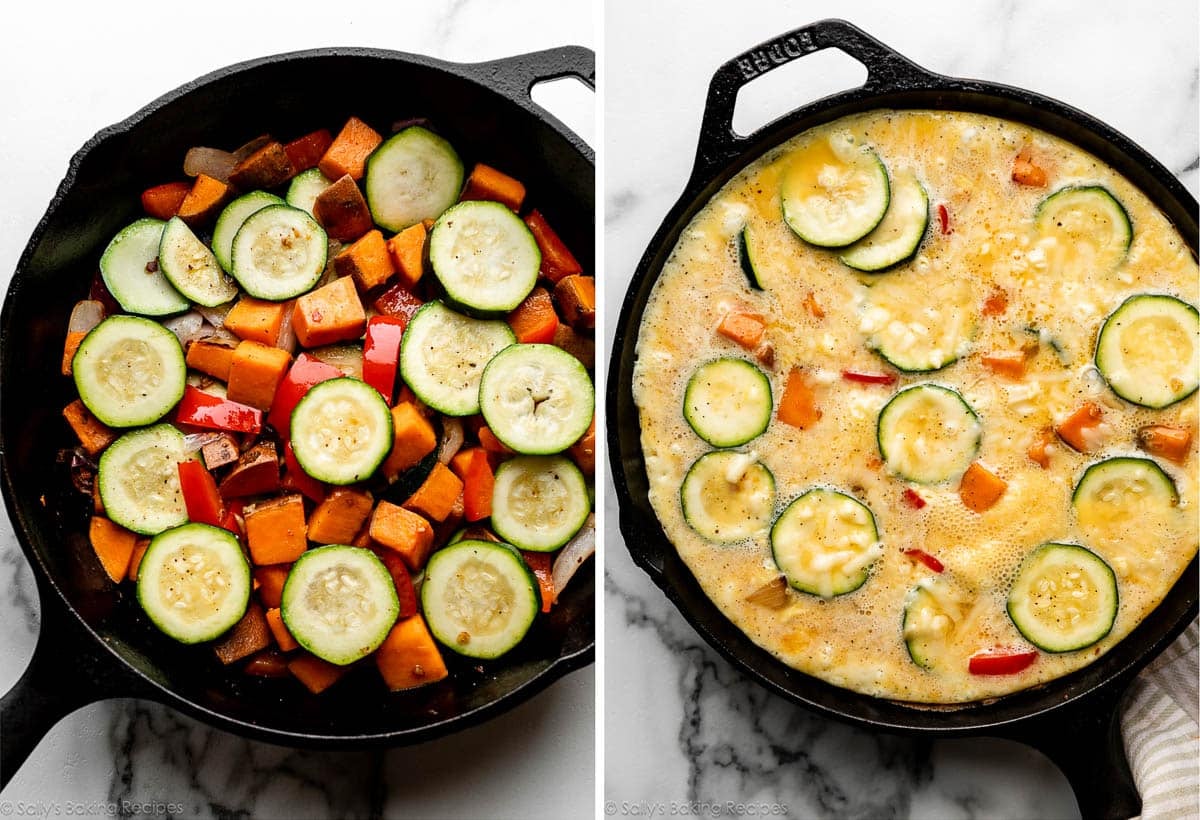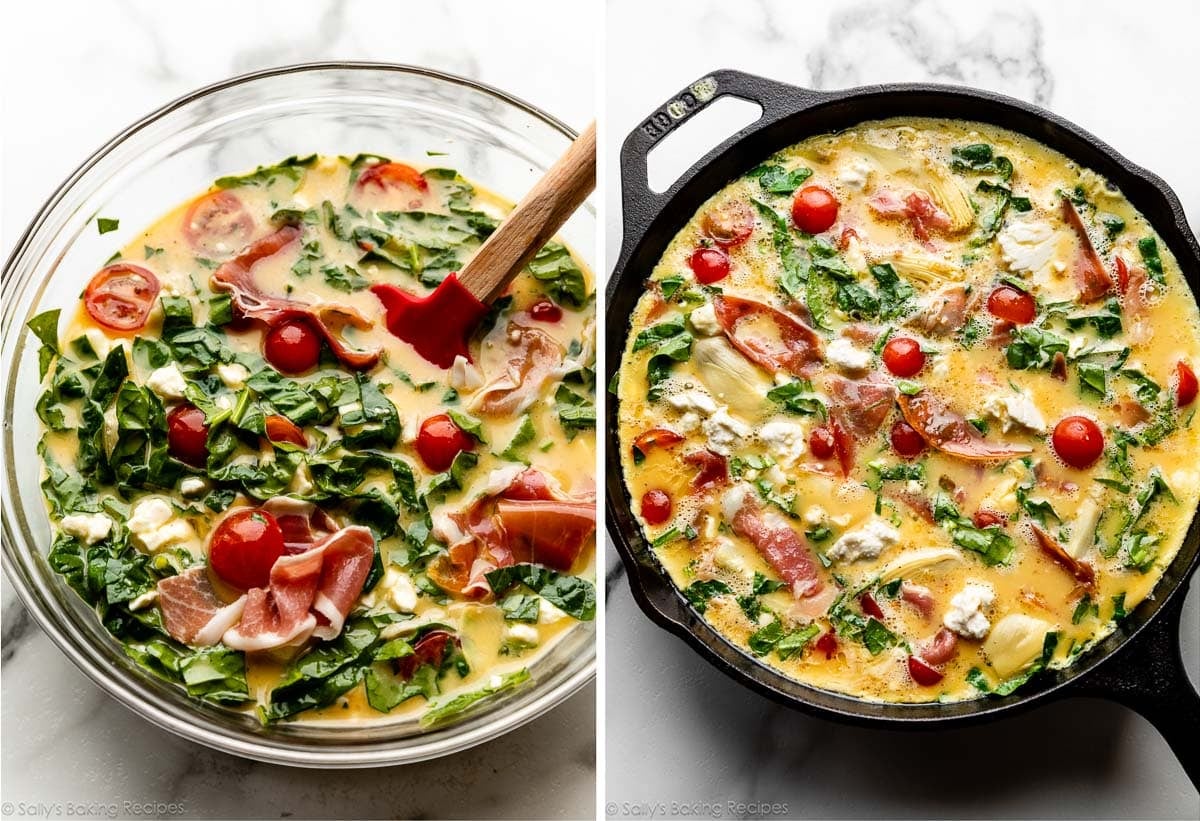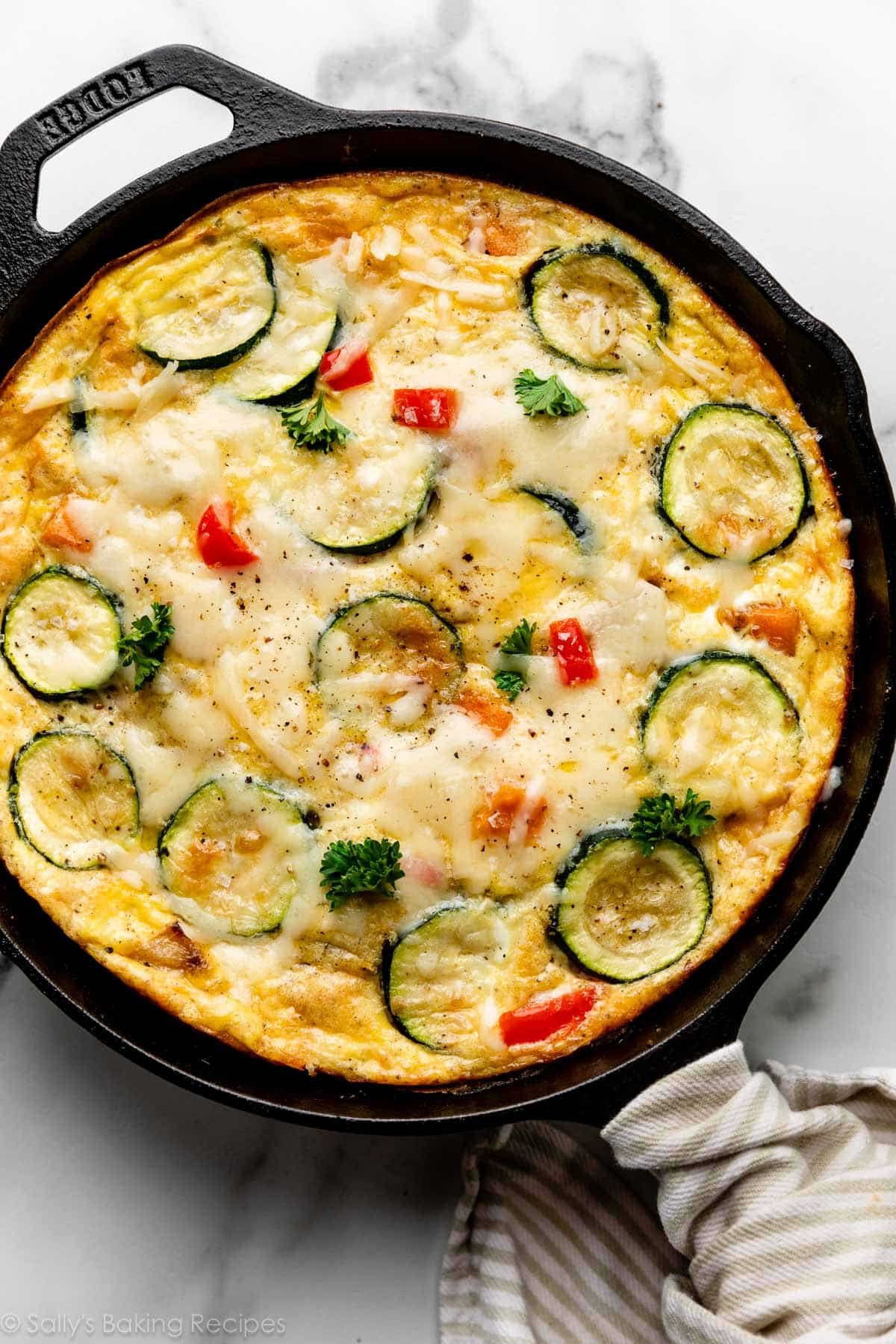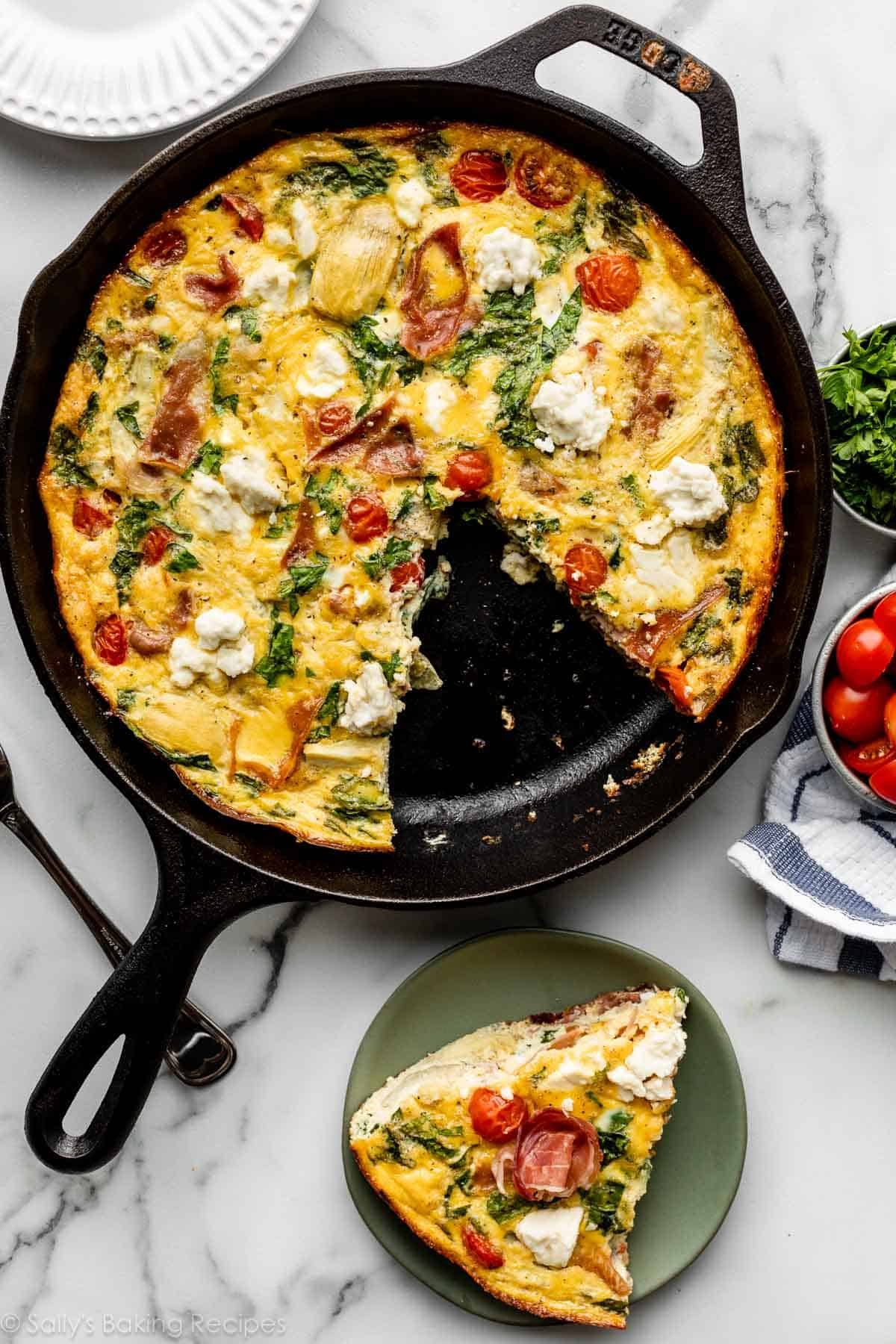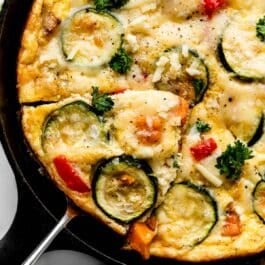What Is a Frittata?
If you’ve never made one before, here’s a quick introduction to this delicious 1-pan meal. While it may resemble a crustless quiche, you’re using double the eggs and half the milk/cream, so the texture is more sturdy and less creamy—more like a thick, baked omelette. Another reader, Andi, commented: “I’ve made the veggie version and one with mushrooms, chicken, and sundried tomatoes. This is a yummy recipe that’s so easy and comes out perfect! ★★★★★” You’ll begin cooking it on the stove, and then transfer it to the oven to bake. So a skillet that can go from stove to oven, such as a cast iron skillet, is necessary. More on this below. Like any homemade omelette, breakfast strata, or breakfast casserole, you can customize the flavors of this frittata by choosing different add-ins. Make it exactly like one of the two ways I describe below, or play around with the recipe and discover your own favorite version!
Base Ingredients in This Frittata Recipe
Just like with my recipes for quiche, breakfast casserole, and even eggs benedict, you can adapt this frittata recipe to your taste, but if you’d like some inspiration, here are my 2 favorite versions:
Make-ahead friendly Can be served warm or at room temperature Packed with protein and vegetables Much easier and faster than making individual omelettes Infinitely customizable!
And if you love this classic version, you’ll these breakfast egg muffins just as much. They’re little mini frittatas!
8 Large Eggs: The foundation of the frittata! 1/2 Cup Milk: Whole milk makes for the best texture, but it’s a small amount, so it’s not a big deal to use low-fat or nondairy milk instead. Use cream or half-and-half for a creamier texture. Salt & Pepper: These enhance all the other flavors you’ll add to your frittata. 1 Cup Cheese: You can use whatever type of cheese you enjoy best in an omelette. In the 2 frittata recipes detailed below, we’re using shredded sharp cheddar and crumbled feta. Olive Oil & Garlic: Cook garlic in some olive oil to give the frittata a flavorful start.
Garden Vegetable Frittata
After the vegetables have softened on the stove, pour the egg mixture on top and let it cook for about 5 minutes before transferring to the oven:
Red Onion: Slice half a red onion and add it to the pan with the garlic. Sweet Potato: Chop up a sweet potato, and cook it with the onion and garlic. Red Bell Pepper: Chopped red pepper adds a pop of color, but yellow or orange peppers taste just as good! Zucchini: Slice a small zucchini, and halve any larger rounds. (This frittata is one of my most favorite zucchini recipes, in fact!) Shredded Sharp Cheddar Cheese: In recipe testing, mild cheddar’s flavor got lost in here. Use a sharper cheese for the best-tasting vegetable frittata.
Mediterranean-Inspired Frittata Recipe
Start on the Stove & Finish in the Oven
Just as I showed you above, a head-start on the stove “sets” the egg mixture which helps prevent a watery frittata. This is important because when you include vegetables with a high water content, such as zucchini and tomatoes, it’s necessary to cook off some of that moisture.
Artichokes: I use canned quartered artichoke hearts, and drain them well. Fresh Spinach: Give the leaves a rough chop. Cherry Tomatoes: Halved cherry tomatoes add color as well as flavor. Prosciutto: This salty, thin-sliced ham is dry-cured, so no pre-cooking is required. Slice into bite-size pieces. Feel free to omit for a vegetarian frittata. Crumbled Feta Cheese: I love the creamy, salty tang of feta, but a shredded hard Italian cheese, such as parmigiano reggiano or pecorino romano, would also be delicious in this Mediterranean-inspired frittata.
After about 5 minutes, the edges should be bubbling and beginning to set, and then you can move the skillet to the oven to bake: Now this is probably the hardest part! The pan is very hot and the mixture is still very liquid, so use 2 oven mitts and go slowly to transfer it super CARE-FULL-Y to the oven. Bake for about 22–26 minutes, until the frittata is puffy and the center is no longer wobbly/wet. Let it cool for at least 10 minutes before you slice into it—the frittata will continue to set up thanks to the residual heat from the pan.
Best Pan to Use
Because you start the frittata on the stove, and then transfer it to the oven, a pan that can go safely from stovetop to oven is necessary. A seasoned cast iron skillet is perfect here. This is the cast iron skillet I have, and I highly recommend it. It’s inexpensive, comes pre-seasoned, works on all types of cooktops, heats evenly, and is made to last a lifetime. (Not sponsored, just a true pan fan!) This 10.25-inch-diameter, 2-inch-deep size is what I use for skillet turkey pot pie, skillet cornbread, sea salt and herb rolls, bruschetta chicken, cornmeal cake, biscuits, my Dutch baby pancake recipe, asiago-crusted skillet bread, and more. Talk about a useful pan to have in the kitchen! You can really use any 10- to 12-inch oven-safe skillet that’s about 2 inches deep. Want to use a muffin pan for individual-sized servings? Use my recipe for easy breakfast egg muffins instead.
What to Serve With Frittata
Fruit and a fresh arugula salad are easy, healthy sides. For more healthy inspiration see my complete list of 30+ healthy breakfast recipes. Or, if you’re serving the frittata as part of a bigger brunch, it would plate nicely alongside any of these favorites:
Cinnamon Rolls Raspberry Danish Twist Bread Coffee Cake Blueberry Muffins or Banana Muffins Scones Strawberry Bacon Salad Whole Wheat Waffles Apple Cinnamon Bread
